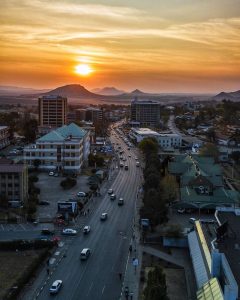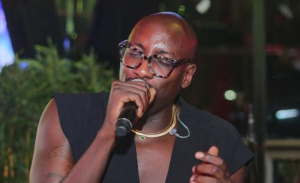Goma in crisis: battle for control intensifies between congolese army and M23 rebels
3 min readThe battle for control of Goma, the capital of the North Kivu province in the eastern Democratic Republic of Congo (DRC), has intensified as fighting between the Congolese army and M23 rebels rages on. After another night of clashes, it remains uncertain who holds control over the city.
On Sunday, the M23 rebel group, which the United Nations claims is backed by thousands of Rwandan soldiers, launched a swift assault on Goma, further escalating the conflict in the region. The rebels have claimed control of the city, but the Congolese government disputes this, with conflicting reports emerging about how much of Goma the M23 actually holds.
According to residents and journalists on the ground, M23 rebels were seen patrolling streets, particularly in the western part of Goma. However, reports also suggest that Congolese soldiers are maintaining a presence near the airport. Given the lack of access to large parts of the city by independent observers and humanitarian aid workers, it is impossible to verify the extent of control each side has. The situation remains fluid, and accurate information is difficult to obtain.
The fighting is not confined to Goma alone; clashes have spread throughout the surrounding areas of the city. Heavy exchanges of fire resumed early on Tuesday, indicating that the conflict is far from over. As the violence continues, thousands of civilians have been forced to flee their homes, seeking refuge in safer areas.
The communication blackout in Goma has exacerbated the crisis. Internet services have been cut off, radio stations have ceased broadcasting, and phone lines are frequently down, leaving the city isolated from the outside world. The only updates available are those passed along by word of mouth, making it even harder to understand the full scope of the situation.
The M23 rebels, a group primarily composed of ethnic Tutsis, have a complex history in the region. The group first emerged in 2012 and briefly captured Goma before withdrawing under international pressure. Since then, they have periodically clashed with Congolese forces. The current flare-up, however, has seen the M23 make significant territorial gains, particularly in the eastern DRC. The group’s resurgence has been fueled by tensions with the Congolese government, as well as accusations of Rwandan support. Rwanda has consistently denied backing the M23, although many international observers believe the country has provided military aid to the group.
The ongoing conflict in North Kivu is part of a broader, decades-long struggle for control in the eastern DRC, a region rich in natural resources but plagued by instability. Various armed groups, including the M23, have fought for control over these resources, often leading to widespread violence and displacement of civilians. The situation has been further complicated by regional dynamics, with Rwanda and Uganda also involved in the DRC’s complex web of armed conflicts.
The humanitarian crisis in Goma and its surroundings is worsening by the day. Thousands of displaced people have sought refuge in neighboring towns or crossed into Uganda, adding to the already overwhelming number of refugees in the region. The UN and other humanitarian organizations have called for greater access to the area to provide aid, but security concerns and restricted access have hindered their efforts.
The Congolese government has been under increasing pressure to regain control of Goma and stabilize the region. The army has been conducting operations against the M23, but the rebels have proven resilient, with their ability to mobilize and carry out attacks suggesting a well-organized military force. As the battle for Goma continues, the Congolese army faces the challenge of defending the city while also managing the broader conflict in North Kivu.
With no clear resolution in sight, the fate of Goma remains uncertain. The ongoing violence has devastated local communities and further complicated an already dire humanitarian situation. The international community has expressed concern about the escalating conflict and called for renewed efforts to find a peaceful solution. However, until a ceasefire is reached, Goma and the surrounding areas will likely continue to be a battleground in this protracted conflict.
In the meantime, the people of Goma remain caught in the crossfire, with their lives and livelihoods hanging in the balance as the battle for control of the city intensifies.
Source: African News Agency







